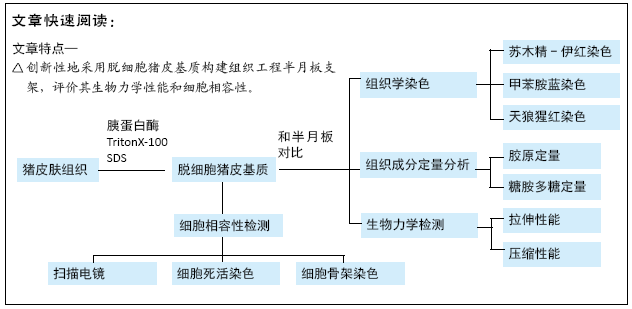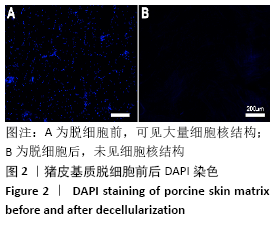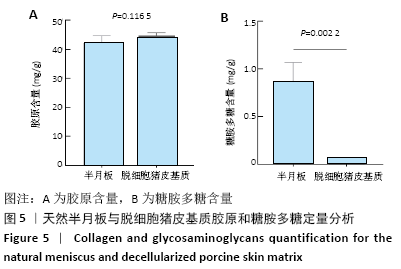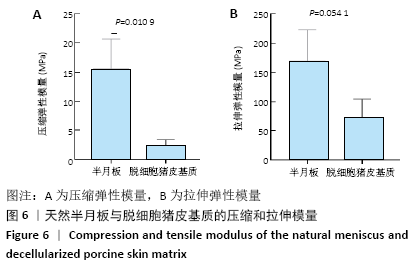[1] MERRIAM AR, PATEL JM, CULP BM, et al. Successful Total Meniscus Reconstruction Using a Novel Fiber-Reinforced Scaffold: A 16- and 32-Week Study in an Ovine Model. Am J Sports Med. 2015;43(10):2528-2537.
[2] CHEN M, GUO W, GAO S, et al. Biomechanical Stimulus Based Strategies for Meniscus Tissue Engineering and Regeneration. Tissue Eng Part B Rev. 2018; 24(5):392-402.
[3] Fox AJ, Wanivenhaus F, Burge AJ, et al. The human meniscus: a review of anatomy, function, injury, and advances in treatment. Clin Anat. 2015; 28(2):269-287.
[4] WEBER J, KOCH M, ANGELE P, et al. The role of meniscal repair for prevention of early onset of osteoarthritis. J Exp Orthop. 2018;5(1):10.
[5] BILGEN B, JAYASURIYA CT, OWENS BD. Current Concepts in Meniscus Tissue Engineering and Repair. Adv Healthc Mater. 2018;7(11):e1701407.
[6] GUO W, LIU S, ZHU Y, et al. Advances and Prospects in Tissue-Engineered Meniscal Scaffolds for Meniscus Regeneration. Stem Cells Int. 2015;2015: 517520.
[7] CHUAH YJ, PECK Y, LAU JE, et al. Hydrogel based cartilaginous tissue regeneration: recent insights and technologies. Biomater Sci. 2017;5(4): 613-631.
[8] WON JY, LEE MH, KIM MJ, et al. A potential dermal substitute using decellularized dermis extracellular matrix derived bio-ink. Artif Cells Nanomed Biotechnol. 2019;47(1):644-649.
[9] VENTURA RD, PADALHIN AR, PARK CM, et al. Enhanced decellularization technique of porcine dermal ECM for tissue engineering applications. Mater Sci Eng C Mater Biol Appl. 2019;104:109841.
[10] Pissarenko A, Yang W, Quan H, et al. The toughness of porcine skin: Quantitative measurements and microstructural characterization. J Mech Behav Biomed Mater. 2020;109:103848.
[11] LEE CH, RODEO SA, FORTIER LA, et al. Protein-releasing polymeric scaffolds induce fibrochondrocytic differentiation of endogenous cells for knee meniscus regeneration in sheep. Sci Transl Med. 2014;6(266):266ra171.
[12] KWON H, BROWN WE, LEE CA, et al. Surgical and tissue engineering strategies for articular cartilage and meniscus repair. Nat Rev Rheumatol. 2019;15(9):550-570.
[13] SHIMOMURA K, HAMAMOTO S, HART DA, et al. Meniscal repair and regeneration: Current strategies and future perspectives. J Clin Orthop Trauma. 2018;9(3):247-253.
[14] PILLAI MM, GOPINATHAN J, SELVAKUMAR R, et al. Human Knee Meniscus Regeneration Strategies: a Review on Recent Advances. Curr Osteoporos Rep. 2018;16(3):224-235.
[15] SUN J, VIJAYAVENKATARAMAN S, LIU H. An Overview of Scaffold Design and Fabrication Technology for Engineered Knee Meniscus. Materials (Basel). 2017;10(1):29.
[16] SUN J, VIJAYAVENKATARAMAN S, LIU H. An Overview of Scaffold Design and Fabrication Technology for Engineered Knee Meniscus. Materials. 2017; 10(1):29.
[17] MONIBI FA, COOK JL. Tissue-Derived Extracellular Matrix Bioscaffolds: Emerging Applications in Cartilage and Meniscus Repair. Tissue Eng Part B Rev. 2017;23(4):386-398.
[18] 景红霞,黄桂娟,鲁双云,等.纳米银/猪皮基质医用敷料抑菌效果评价[J].中国公共卫生,2010,26(11):1355-1356.
[19] 苏建东,王志学,谢尔凡.柔性纳米银复合猪皮基质敷料在患者深Ⅱ度浅削痂创面的应用[J].中华烧伤杂志,2012,28(5):359-360.
[20] 刘新华.猪皮脱细胞真皮基质敷料获准国家Ⅲ类医疗器械注册证[J].西部皮革,2014,36(14):54.
[21] METWALLY S, STACHEWICZ U. Surface potential and charges impact on cell responses on biomaterials interfaces for medical applications. Mater Sci Eng C Mater Biol Appl. 2019;104:109883.
[22] ITO Y. Surface micropatterning to regulate cell functions. Biomaterials. 1999; 20(23-24):2333-2342.
[23] MARKES AR, HODAX JD, MA CB. Meniscus Form and Function. Clin Sports Med. 2020;39(1):1-12.
[24] PICKARD J, INGHAM E, EGAN J, et al. Investigation into the effect of proteoglycan molecules on the tribological properties of cartilage joint tissues. Proc Inst Mech Eng H. 1998;212(3):177-182.
[25] YANAGISHITA M. Function of proteoglycans in the extracellular matrix. Acta Pathol Jpn. 1993;43(6):283-293.
[26] ANDREWS SHJ, ADESIDA AB, ABUSARA Z, et al. Current concepts on structure-function relationships in the menisci. Connect Tissue Res. 2017; 58(3-4):271-281.
[27] MAKRIS EA, HADIDI P, ATHANASIOU KA. The knee meniscus: structure-function, pathophysiology, current repair techniques, and prospects for regeneration. Biomaterials. 2011;32(30):7411-7431.
[28] ZHANG ZZ, JIANG D, DING JX, et al. Role of scaffold mean pore size in meniscus regeneration. Acta Biomater. 2016;43:314-326.
[29] YUAN Z, LIU S, HAO C, et al. AMECM/DCB scaffold prompts successful total meniscus reconstruction in a rabbit total meniscectomy model. Biomaterials. 2016;111:13-26.
[30] GAO S, CHEN M, WANG P, et al. An electrospun fiber reinforced scaffold promotes total meniscus regeneration in rabbit meniscectomy model. Acta Biomater. 2018;73:127-140.
[31] MALVANKAR SM, KHAN WS. An Overview of the Different Approaches Used in the Development of Meniscal Tissue Engineering. Curr Stem Cell Res Ther. 2012;7(2):157-163. |









